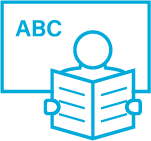Interventions Targeting Working Memory in 4-11 Year Olds within Their Everyday Contexts: A Systematic Review
Direct training on working memory (WM) tasks and practicing certain skills that can impact indirectly on WM (such as physical activity, fantastic play, and inhibition) both produced improvement on WM tasks, with some benefits for near-transfer activities. The common ingredient across effective interventions was the executive-loaded nature of the trained task.
Authors: Anita Rowe, Jill Titterington, Joni Holmes, Lucy Henry, & Laurence Taggart
Source: Rowe, A., Titterington, J., Holmes, J., Henry, L., & Taggart, L. (2019). Interventions targeting working memory in 4-11 year olds within their everyday contexts: A systematic review. Developmental Review, 52, 1-23, https://doi.org/10.1016/j.dr.2019.02.001
The aim of this review is to conduct a systematic examination of the effectiveness of non-computerised interventions with 4–11 year olds to identify the following: their effects on working memory (WM); whether benefits extend to near- and far-transfer measures; if improvements are sustained over time; the active ingredients; and the optimum dosage. Both direct training on WM tasks and practicing certain skills that may impact indirectly on WM (such as physical activity, fantastic play, and inhibition) produced improvement on WM tasks, with some benefits for near-transfer activities. The common ingredient across effective interventions was the executive-loaded nature of the trained task.
- Working memory is the ability to hold in mind and mentally manipulate information over short periods in the face of distraction.
- The capacity of WM is limited, it develops more in the first 10 years of life than at any other time, and it reaches adult capacity levels around the age of 14 years.
- Children with poor WM struggle to cope with the heavy WM loads of the classroom, which can result in them failing to complete individual learning activities. Moreover, as problems accumulate, this leads to poor academic achievement.
Working memory models:
- Working memory models involve two key features: high-level attentional control plus temporary storage
- Memory tasks can be differentiated into simple span tasks (involving temporary, passive storage of material) and complex span tasks (requiring the concurrent storage and processing of information while relying on attentional resources under executive control).
Effectiveness research of WM training:
- Theoretical perspective: the goal has been to understand the underlying cognitive processes by exploring the extent to which training can improve WM and by identifying variables that moderate or mediate the effects of training and transfer to other cognitive functions.
- Applied perspective: the focus has been on investigating the impact of WM training on outcomes relating to real-world skills (such as attention, language, and academic achievement).
The study
The current review is the first to focus specifically on the effectiveness of non-computerised WM interventions applied within children’s everyday contexts. The aims of the review are to map the types of interventions that have been implemented with young children in everyday contexts and examine the theoretical framework/s used to underpin them.
Research questions:
- What types of WM interventions are implemented and what is their theoretical underpinning?
- What are the effects of the interventions on WM and what aspects of WM (if any) are impacted?
- Do WM improvements (if any) extend to similar untrained WM tasks (near-transfer effects) or dissimilar abilities linked with WM (far-transfer effects)?
- Are WM improvements durable over time?
- What are the active ingredients and the optimum dosage of effective interventions?
Eligibility criteria of the studies:
- conducted with children aged 4–11 years
- implemented any intervention that targets WM and is applied within children’s everyday contexts
- employed a randomised controlled, quasi-experimental, or single case experimental design
- included at least one pre- and post-intervention measure of WM
Findings
- The included studies were classified into four intervention types: adapting the classroom environment; direct WM training without strategy instruction; direct WM training with strategy instruction; training skills that indirectly affect WM.
- In one paper, the effects of adapting the classroom environment on children’s WM skills were investigated. While a positive association between teacher’s use of strategies and children’s post-intervention reading and spelling scores was identified, this association was also observed on pre-intervention measures of reading comprehension. This means the most effective teachers were already using appropriate strategies prior to the intervention.
- All three studies that implemented a direct WM training approach without strategy instruction reported improvements on trained WM measures.
- Five studies implemented direct WM training with strategy instruction, of which two trained short-term memory (STM) and three targeted executive-loaded WM (ELWM). Overall, the results suggest that effects on trained WM were observed when ELWM tasks were trained.
- Of the nine studies in which skills that may indirectly impact WM were trained, five studies implemented a physical activity intervention in which four found significant improvements in ELWM skills.
- Two studies investigated the effects of training phonological awareness on WM. It was suggested that rhyme and vocabulary training do not improve VSTM skills while phoneme awareness training produce positive effects.
- One study suggested that children’s fantastical play skills can be improved through intervention, which can strengthen VSTM skills. In another study, inhibitory control was improved by training and produced effects on WM, attention, and behaviour.
Summary
- The first research objective was to identify both the types of WM interventions implemented and their theoretical underpinnings. The range of intervention approaches included the following: adapting the environment to reduce WM loads; direct WM training without strategy instruction; direct WM training with strategy instruction; and training skills that may indirectly impact on WM. Many of the studies lacked a clear theoretical account of why the intervention should impact WM.
- The second research question was to identify the effects of interventions. A significant outcome of this review is that WM skills can be altered through diverse interventions, particularly in relation to verbal WM skills (which were more frequently measured than the visuospatial domain). Further, it would appear that ELWM skills are more amenable to change compared to STM skills.
- For the third and fourth research questions (identify any near- and far-transfer effects and the durability of WM improvements over time), the evidence was limited because few studies measured these outcomes. Preliminary evidence suggests that certain direct and indirect WM tasks have the potential to produce near-transfer effects on similar WM tasks and far-transfer effects on areas such as reading comprehension, numeracy skills, attention and behaviour.
- The final research question concerned the active ingredients and optimum dosage requirements for WM interventions. The most effective tasks were executive-loaded, meaning they tap into attentional resources under executive control (such as listening recall, odd one out, backward digit recall, verbal and visuospatial dual tasks, and word list updating). Of the indirect WM tasks, cognitively-demanding physical activity, fantastical play, and inhibition training are suggested as being beneficial to ELWM. The optimum dosage required to produce training effects remains uncertain because dosage variables were often unreported or varied significantly across studies. However, relatively short interventions of 5–6 weeks total duration were shown to be effective.



